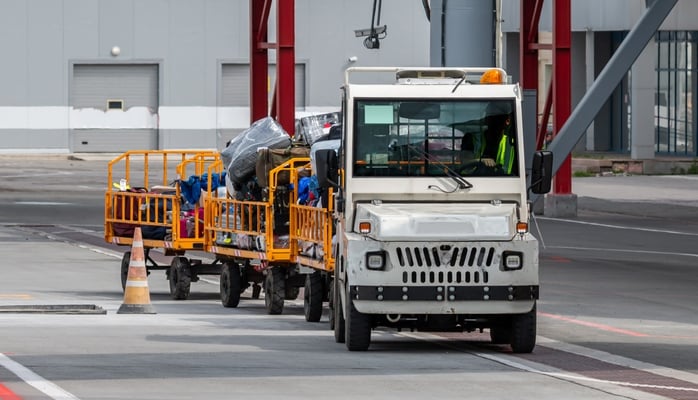Defining Good Safety Culture in Aviation SMS

Safety culture will be the last thing to develop in your SMS.
Once you fully implement your SMS design (Phase 3 of SMS implementation), you will need to monitor your SMS to ensure it is functioning as designed. Aviation safety programs with good safety cultures usually operate as designed.
Having good safety culture helps you complete Phase 4 of SMS implementation. Broadly speaking, a good safety culture is characterized by:
- Consistent hazard reporting;
- Acceptance of the SMS;
- Lack of silos and other forms of resistance to the SMS;
- Safety behaviors defined by safety awareness;
- Commitment to one time, thorough safety management; and
- Upper management support.
Good safety culture is indicated in:
- The work management has done to support safe behaviors;
- The amount of safety awareness employees demonstrate; and
- The quality of resources provided by the accountable manager.
Here are 20 indicators of what a good aviation safety culture looks like.
Hazard Reporting System Is Fully Implemented
Your hazard reporting system is the foundation of your SMS. Through it, you will:
- Collect mission-critical data;
- Identify new concerns; and
- Facilitate continuous improvement of the SMS.
Employees Follow Reporting Guidelines
Your reporting guidelines should help guide employees on important issue reporting questions, like:
- How soon do I need to report my issue?
- Will I get in trouble if I report this?
- Will I get blamed if I report this?
- Do I need to report this, or is it optional?
These questions may be answered in multiple safety policies. When employees stick to the guidelines you have laid out, it indicates a good safety culture.
List of Mandatory/Voluntary Issue Reporting Has Been Created
An essential part of creating reporting guidelines and documenting which issues:
- MUST be reported when identified (mandatory); and
- CAN be reported when identified (voluntary).
Having this list in your SMS indicates that you have carefully thought out which issues are the most important to your SMS.
Related Articles on Aviation Hazard Reporting
- 5 Best Ways to Make Reporting Safety Issues More Convenient in Aviation SMS
- Safety Chart: Mandatory vs. Voluntary Aviation SMS Issues to Report
- What Good Hazard Reporting Process Look Like in Mature Aviation SMS
Employees Have Several Ways to Report Issues

Offering at least several ways to report issues is a great way to encourage a productive hazard-reporting culture. Some good ways are:
- Standard hazard reporting process;
- Email;
- Offline; or
- Via a public link.
Employees Report Issues Within 24 Hours of Identification
When employees regularly report issues in a timely manner, it indicates that employees are dedicated to making management aware of safety. Many organizations struggle in this area, and it is not uncommon to have issues reported several days after the occurrence.
Audit/Inspections Are Facilitated Regularly
Regular audits and inspections demonstrate a willingness towards proactive risk management. They help you uncover potential concerns before those concerns lead to hazard occurrence. In best-case scenarios:
- Inspections are carried out consistently, such as once per month;
- Internal audits are carried out consistently, such as twice per year; and
- All findings are corrected swiftly.
Few Issues Stem From Not Following Procedures
Employees who follow prescribed procedures and other resources, such as checklists, policies, etc., demonstrate high-quality safety behavior. Awareness and willingness to accept the SMS hallmarks of a good safety culture.
Many Routine Tasks Have Checklists
When many routine tasks have checklists, it shows that management is willing to put in the work, time, and effort to develop resources for good safety behavior. Having checklists provides employees:
- Guidance;
- Workflow; and
- A “trust but verify” attitude.
A Complete Emergency Response Plan Has Been Created
An emergency response plan provides critical guidance in high risk, stressful situations (emergencies). This guidance includes:
- How to act;
- Who to contact; and
- What resources to use.
Related Articles on Aviation SMS Articles
- How to Monitor Aviation Safety Reporting Culture Using Safety Charts
- 5 Ways to Avoid Common Aviation SMS Audit Findings
- How to Document Record-Keeping Procedures for Aviation SMS Regulatory Compliance
There Are No Management Silos
Management silos demonstrate that not everyone in your SMS accepts the SMS. Managers who develop silos would rather do things “their way,” and put the emphasis on:
- Their personal abilities; rather than
- The system.
Usually this stems from a manager feeling insecure about their position.
More Than 90% of Issues and CPAs Are Closed on Time
On-time issue and on-time corrective preventative action closure is an excellent way to measure management’s commitment to continuous improvement. When issues and CPAs are constantly closed late, it shows a poor personal investment and care for the SMS.
There Is a Safety Budget Adequate for Quality Safety Resources
Safety budget is a great indication of how dedicated the accountable executive is to your SMS. Safety programs with good budgets have a huge advantage over those that don’t, both in terms of:
- Available resources that can be acquired; and
- Ability of the SMS to survive safety manager turnover.
Related Articles on Aviation Safety Culture Articles
- Checklist for Proactive Safety Culture in Aviation SMS [With Free Resources]
- How Aviation Safety Managers Can Deal With Silo Mentality
- 8 Charts to Monitor Safety Culture Performance in Safety Management Systems (SMS)
Employees Receive Consistent Feedback

It’s definitely a best practice to give employees feedback:
- After they report an issue, such as to say thank you for reporting; and
- After a reporter’s reported issues are fully managed, such as to inform them of what changes were made.
Employees Personally Know Safety Manager
When employees know their safety manager personally, it shows that the safety manager has taken the time to personally interact with them. This is a good way to “put a face on the SMS.” When employees understand that SMS requires great personal effort to manage it, they will be more likely to accept it.
Accountable Executive Shows Active Support for Safety Program
Accountable executives show active support for an SMS by:
- Ensuring good budget;
- Participating in safety meetings;
- Performing safety assurance operations once or twice per year; and
- Stay in regular communication with safety managers who are stewards of the safety program.
Related Articles on Aviation Safety Manager Articles
- How to Manage Aviation SMS Budget Expectations - for Safety Managers
- How to Identify Hazards in Aviation SMS
- 4 Ways to Know You Are Qualified to Be an Aviation Safety Officer
Change Management Is Always Communicated to Relevant Employees
No employee likes to feel that changes are simply happening to them, without their awareness or knowledge. Communicating change management involves:
- Informing employees of upcoming change;
- Getting feedback about change; and
- Informing employees of changes made.
Safety Meetings Are Held Frequently
Studies show a direct correlation between the number and frequency of safety meetings and the level of safety in the organization. Safety managers know this, and taking the time and effort to ensure that meetings are held is one good way to demonstrate a good safety culture.
Resource: Safety Topics
All Employees Receive Hazard Identification Training
Hazard identification needs to happen on an initial and recurring basis. It’s one of the sole ways employees will understand:
- What a hazard is;
- What objects, behaviors, and other root causes lead to hazard occurrence; and
- What hazard looks like in an operational environment.
All Employees Receive Initial and Recurring SMS Training
Initial and recurring SMS training help keep your employees informed on the safety program:
- Initial SMS training: introduces employees to SMS and mission-critical elements, such as policies, processes, roles, etc.;
- Recurrent SMS training: ensures that employees continue to understand and are aware of the SMS and mission-critical elements.
Surveys and Other Feedback Methods Are Used
If you are familiar with this blog, you know how often I bring up safety surveys. It’s because they are stellar tools for gathering feedback about:
- Shortcoming of SMS;
- What SMS is doing well; and
- How employees feel about SMS.
Related Articles on Aviation Safety Manager Articles
- 3 Scenarios for Accountable Executives to Minimize Risk to Aviation SMS
- What Is Management of Change in Aviation SMS
- Tips to Automate Aviation SMS Training for Initial/Recurrent Requirements (Free Resources)
Last updated December 2025.









